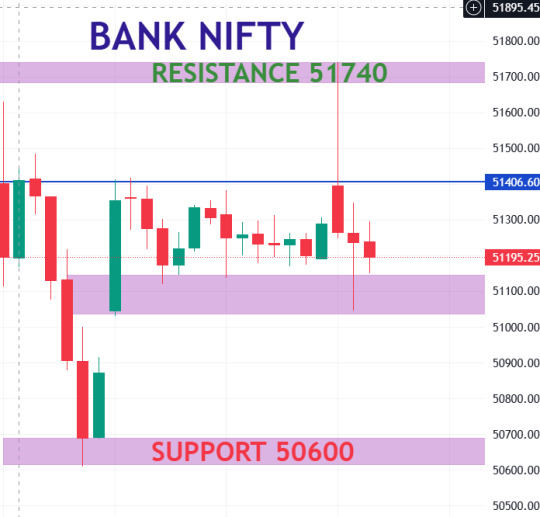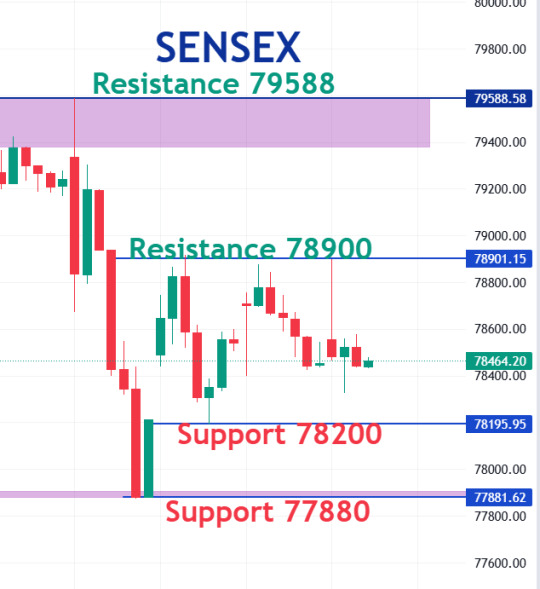#BSE Nifty
Explore tagged Tumblr posts
Text

#twitter#nseindia#nifty today#nse#banknifty#bse#nifty#nifty prediction#nifty50#stock market#niftytrading#tweets#humor#memes#wtf#funny
20 notes
·
View notes
Text
TVS Supply Chain Solutions stock jumps 9% after company secures 5-year contract with Daimler Truck AG
Fill https://intensifyresearch.com/web/landingpage to get insights from SEBI registered experts with 3 days free trial & over 90% accuracy
#finance#investing#stock market#share market#economy#money#tvs motor#bse#banknifty#nifty#sensex#nifty50#nse#nifty prediction
8 notes
·
View notes
Video
youtube
step 1 in stock market
2 notes
·
View notes
Text

#ipo#stockmarket#banking#invest#investing#bse#100 days of productivity#memes#mensfashion#finance#BSE#NSE#Equity#ZEE BUSINESS#NIFTY#BANKNIFTY
2 notes
·
View notes
Text
Buy or Sell Stocks: Indian Market Sees Flat Closure
Buy or Sell Stocks The Indian stock market experienced a rollercoaster ride on Tuesday, opening lower due to weak global sentiments but eventually closing flat. The Nifty 50 index rose by 37 points to 22,497, while the BSE Sensex ended marginally lower at 74,102. The Bank Nifty index also finished lower at 47,853. Key Highlights: IndusInd Bank’s shares plummeted 27% to a 52-week low due to…
0 notes
Text
The Indian stock market is always a dynamic space, with fluctuations that can either excite or concern investors depending on the day’s performance. As of today, the Sensex has gained 240 points, while Nifty is holding steady around 22,600. However, the markets have shown mixed signals, with metals dragging down the performance while sectors like auto and media are showing impressive growth. Investors are constantly looking for updates and insights to navigate this unpredictable terrain. If you’re one of those, then understanding the intricacies of the Sensex today and Nifty trends is essential. In this blog post, we’ll take a detailed look at these developments and explore the broader implications of today’s market movements. Let’s dive into the latest stock market live updates and break down the key factors influencing the performance of the Sensex and Nifty.
#sensex today#sensex today live#what is sensex#what is nifty and sensex#sensex moneycontrol#indexbom: sensex#sensex live#sensex share market#live sensex today#sensex option chain#sensex expiry day#small cap sensex today#large cap sensex today#bse sensex
0 notes
Text
Indo Farm Equipment IPO Allotment Status: A Closer Look at the Latest Buzz
#aus vs ind#cats of tumblr#artists on tumblr#cozycore#supernatural#destiel#autumn#cozy#dark academia#light academia#mental health#stobotnik#stock market#tranding#nifty50#sensex#nifty prediction#banknifty#share market#nse#bse
1 note
·
View note
Text



Nift Bannifty Sensex Technical analysis 28 DEC
#stock market#nifty#nifty50#nifty prediction#nifty fifty#banknifty#sensex#nse#bse#bse sensex#share market#technicalanalysis#chart patterns#finnifty#live trading#howtrading2#howtrading
1 note
·
View note
Text

#twitter#nseindia#nifty today#banknifty#nse#stock market#bse#nifty prediction#nifty50#nifty#niftytrading#tweets#wtf#funny#memes#humor
9 notes
·
View notes
Text
Stocks to buy today-
1] ADSL: Buy at ₹182.70, target ₹192, stop loss ₹175; & 2] Mahindra Logistics: Buy at ₹525, target ₹550, stop loss ₹505; 3] OCCL: Buy at ₹810, target ₹850, stop loss ₹780; 4] Canara Bank: Buy at ₹119, target ₹126, stop loss ₹115; 5] Indian Terrain Fashions: Buy at ₹75.40, target ₹79, stop loss ₹72.75; 6] Vardhman Holdings: Buy at ₹4043.35, target ₹4250, stop loss ₹3900.
Get comprehensive insights from SEBI Registered Experts FILL https://intensifyresearch.com/web/landingpage NOW & avail 3 Days FREE TRIAL
#stock market#banknifty#investing#economy#nifty50#nse#sensex#nifty prediction#share market#finance#bse#bse sensex#bseindia#niftytrading#nifty#nseindia#nifty today#trading tips#option trading#investors#investment#investing stocks#financial#financial freedom#income#invest#fintech#blockchain#crypto#stock trading
3 notes
·
View notes
Video
youtube
Sector to focus
2 notes
·
View notes
Text

#finance#ipo#banking#invest#bse#investing#100 days of productivity#memes#mensfashion#stockmarket#LIC#UTI#Reliance#Adani#Nifty50#nifty#bank
2 notes
·
View notes
Text
शेयर बाजार में हाहाकार: 7 दिन की तेजी टूटी, निवेशकों के 3.5 लाख करोड़ डूबे, क्या है गिरावट की वजह?
Share Market Today: भारतीय शेयर बाजार में बुधवार, 26 मार्च 2025 को भारी गिरावट देखने को मिली। सात दिनों की शानदार तेजी का सिलसिला टूट गया और बाजार लाल निशान में बंद हुआ। सेंसेक्स और निफ्टी दोनों में तगड़ी बिकवाली हुई, जिसके चलते निवेशकों को एक ही दिन में करीब 3.51 लाख करोड़ रुपये का नुकसान उठाना पड़ा। अमेरिकी टैरिफ नीतियों को लेकर बढ़ती अनिश्चितता और मुनाफावसूली ने बाजार को नीचे खींचा। आइए जानते…
#BSE Midcap#BSE Sensex#BSE Smallcap#indian stock market today#investor losses#market fall March 26 2025#NSE Nifty#profit booking#SHARE MARKET CRASH#US tariff impact
0 notes
Text

#stock market#bse#nifty#nifty50#banknifty#nifty today#nseindia#niftytrading#nse#nifty prediction#BSE#NSE#trending#twitter
2 notes
·
View notes
Video
youtube
(via Support and Resistance Calculator RW)
1 note
·
View note
Text
Bajaj Housing Finance: क्या आपको मौजूदा भाव पर बजाज फाइनेंस के शेयर में निवेश करना चाहिए?
Minimize your trading risks & trade smarter with www.intensifyresearch.com 10 DAYS FREE TRIAL & FLAT 30% DISCOUNT on all Research Services - best SEBI-registered RA firm.
Get comprehensive knowledge
– nifty buy sell signals,
– best shares to buy,
– profit making stocks,
– low risk investment option & lot more
by the best SEBI-registered RA firm.
#stock market#banknifty#economy#nifty prediction#investing#nifty50#nse#sensex#share market#finance#ipo news#ipo alert#business news#financial updates#markets#nseindia#buzzing stock#bse sensex#bseindia#stockmarket#invest#investor#stock trading#stock market news#investing stocks#stock exchange#investment#investors#stocks#forex
1 note
·
View note